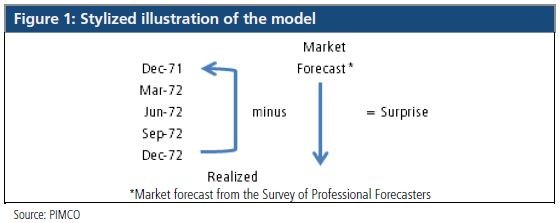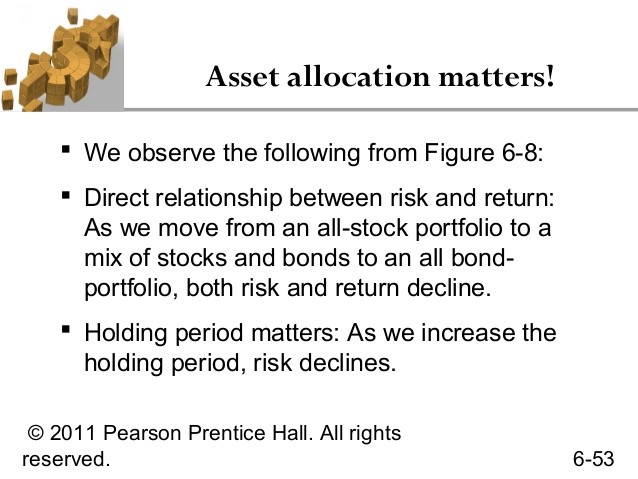WHY RISK (ALLOCATION) MATTERS
Post on: 30 Июнь, 2015 No Comment

Bear markets are painful, but theyre also educational. Its debatable if the crowd ever learns anything in the money game, but the lessons are there just the same.
One of the lessons from the recent and current correction is that portfolios that appeared diversified were in fact far more concentrated than casual observation implied. There are many ways to measure, analyze, design and manage portfolios so as to maximize diversifications benefits across asset classes. For the moment, well briefly consider one in particular—so-called risk budgeting or risk allocation. The March issue of The Beta Investment Report will go into more detail on risk allocation, but heres a brief overview of why the subject is relevant for strategic-minded investors.
In essence, the core insight of risk allocation is that theres more than one way to define multi-asset class diversification. The most popular, alas, may be the most vulnerable to erroneous signals. Vulnerable or not, looking at portfolio allocations based on the capital mix is widely used. For example, a $100,000 portfolio with 60% of the dollars in stocks and 40% in bonds reflects a 60/40 asset allocation in capital terms. But capital allocation is only one measure of asset allocation. Whats more, its often a misleading measure if taken at face value without the benefit of broader analytical context.
Think about what a 60/40 capital allocation implies: Only slightly more than half of the portfolio is exposed to equity risk while nearly 50% of the risk is tied to fixed-income beta. By that standard, the portfolio appears to be reasonably diversified across the two asset classes. Thats reassuring, based on the reasoning that bonds tend to post low return correlations with stocks.
But if we leave the analysis there, were asking for trouble. As it turns out, the stock market beta risk (defined as the volatility of return) is far higher than a capital allocation analysis alone suggests.
As a quick illustration, lets take a closer look at the numbers using the S&P 500 for stocks and the Lehman Brothers U.S. Aggregate for bonds, based on the trailing 10-year annualized standard deviations and correlations through the end of last month. (Data is courtesy of Morningstar Principia. ) A 60% stock/40% bond mix of those two benchmarks delivers a portfolio with a 9.2 annualized volatility over the past decade. The first observation is that a 9.2 vol is considerably lower than the S&P 500s 15.3 standard deviation. Adding bonds clearly lowers the portfolios overall volatility. The problem is that the remaining portfolio volatility is almost entirely dependent on equity beta, i.e. the risk allocation is heavily skewed toward stocks. Using some basic matrix algebra we can determine that 98% of the volatility risk in the 60/40 portfolio comes from equities and a mere 2% of the vol is driven by bonds.

The lesson is that looking only at capital allocations isnt enough when designing asset allocation strategies. Neither is the risk allocation methodology we described above, for that matter. To be sure, there are no easy solutions to building diversified portfolios. But this much is clear: allowing capital allocation analysis to dictate your decisions is an accident waiting to happen. Unfortunately, many investors do just that, in part because capital allocation analysis is easy and intuitive. Its also dangerous at times, as quite a few investors learned last year, when seemingly diversified portfolios took a beating.
Whats a strategic-minded investor to do? The very, very brief answer is to think broadly about return opportunities and risk analysis. In short, pursue an enlightened asset allocation strategy. Those subjects, and more, keep us burning the midnight oil at The Beta Investment Report.
At the very least, no one can argue that looking at capital allocations alone will suffice for risk analysis. The crowd thinks otherwise, of course. But then again, the crowd suffered last year.
Were all risk managers now, as weve discussed many times, including here. The only question: How best to manage risk? We can start by recognizing that simple rules of thumb—e.g. a 60/40 portfolio diversifies away a big part of the risk—no longer suffice. In fact, such rules were always deficient. The fact that so many investors thought otherwise until recently is only more evidence that genius is too easily equated with a bull market. The illusion never lasts, of course, although that never stops the crowd from making the same mistakes.














